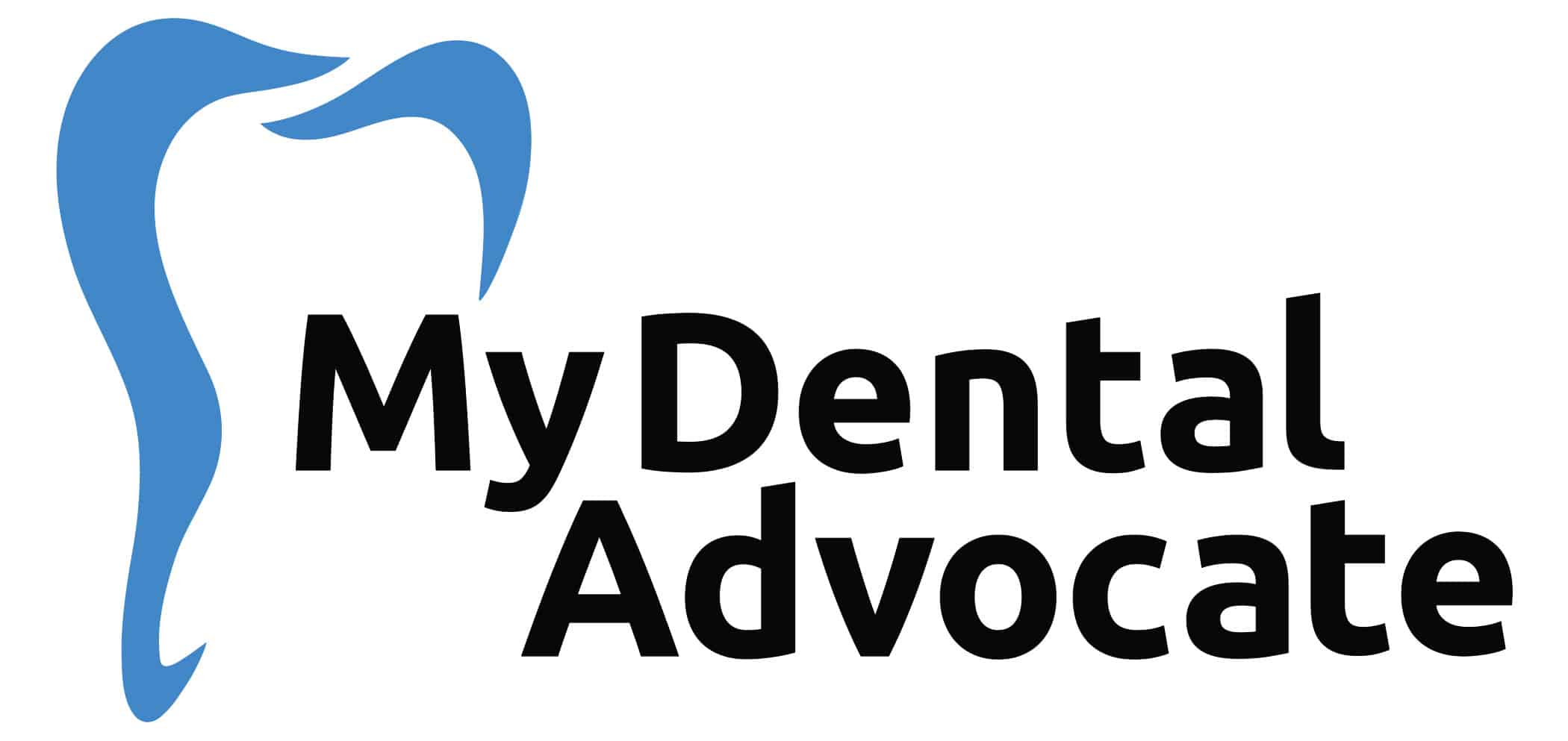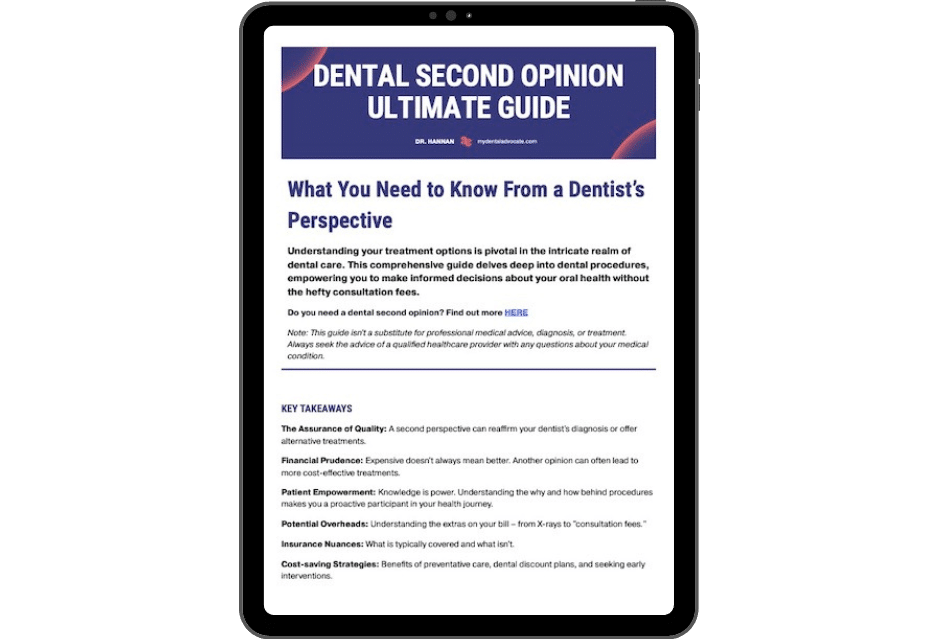Fluoride Varnish vs. Fluoride Treatment (What’s the Difference?)
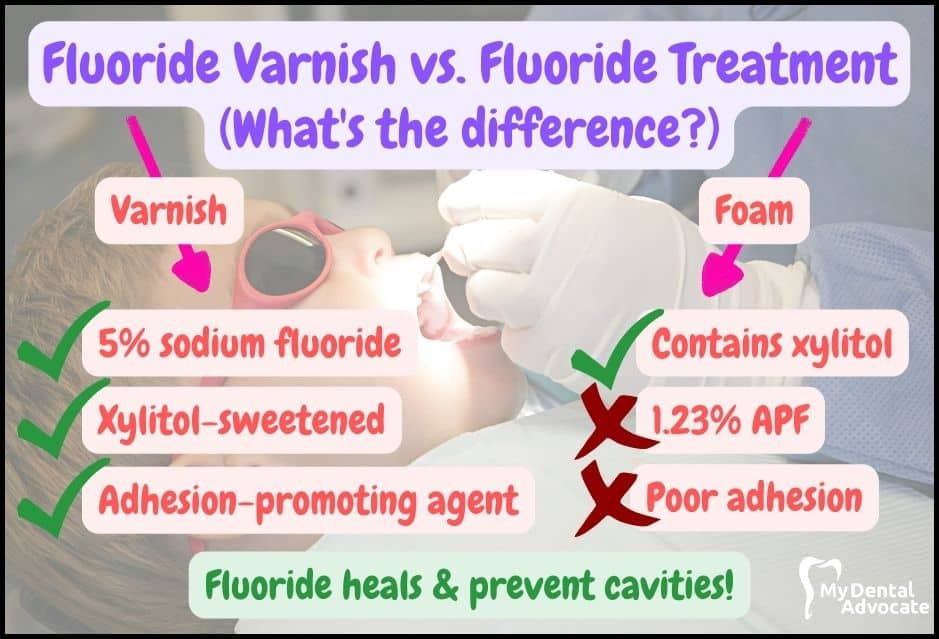
What’s the difference between fluoride varnish and fluoride treatment? Fluoride is a hot topic today, especially in the dental office.
There are many questions about fluoride, including its effectiveness, safety and necessity. Is it safe for children? It’s so expensive; is it worth it?
Let’s take a closer look at fluoride from a dentist’s perspective.
Recommended Reading: Pediatric Dentistry | The Ultimate GuideNeed Dental Advice? Ask Dr. Hannan!
What Is Fluoride Varnish?
Fluorine (fluoride) is nature’s 13th most abundant naturally forming element.
It’s commonly found in the earth’s rock-forming minerals and is a secret weapon for strengthening teeth and fighting tooth decay.
For nearly 50 years, dentists have been utilizing fluoride in practice. Fluoride varnish is a sticky glue-like treatment applied to the tooth surface.
Fluoride varnish contains a high concentration of fluoride (sodium fluoride) to help prevent tooth decay, remineralize (repair) weakened enamel and strengthen teeth.
About 99% of total body fluoride is contained in bones and teeth and continues to rise as we age.
In 1994, the US Food and Drug Administration (FDA) approved fluoride varnish for treating sensitive teeth.
Dentists had great success eliminating tooth sensitivity but soon discovered its cavity-fighting qualities. Dentists use fluoride varnish “off-label” to fight tooth decay because it has proven effective and non-invasive.
Fluoride is directly applied using fluoride varnish, toothpaste or fluoride mouth rinse. In addition, fluoride is delivered systemically in drinking water. Topical fluorides strengthen teeth already present in the mouth, while systemic fluorides are ingested and incorporated into forming tooth structures.
Did you know systemic fluorides protect against tooth decay through saliva, which continually bathes the teeth?
Is Fluoride Varnish Safe?
Fluoride varnish is safe, effective and used by clinicians worldwide.
The sticky varnish is non-invasively painted on teeth to help prevent tooth decay in children.
Only a tiny amount is used, and hardly any fluoride is swallowed. Soon after it’s applied, it hardens, and patients can eat or drink after 30 minutes. Then it is brushed off after 4 to 12 hours.
Recommendations
- 0.7 mg daily for toddlers
- 3 mg daily for adult women
- 4 mg daily for adult men
How Does Fluoride Work?
Fluoride reverses tooth decay using anti-cariogenic (prevent cavities) and antimicrobial properties.
In addition, fluoride lowers the pH, leaving bacteria with less energy to grow, reproduce and generate harmful acid. It’s important to remember that fluoride varnish alone will not prevent cavities.
Fluoride varnish treatments work in conjunction with healthy brushing habits. Fluoride varnishes flow into the tiny cracks and crevasses in the enamel of your teeth, hardening them, so they’re less likely to be damaged by acids from foods and drinks.
It’s primarily used to protect against cavities.
Recommendations
- Using a pea-sized amount of fluoride toothpaste
- Flossing regularly
- Getting regular dental care
- Eating a healthy diet
Fluoride repairs weakened enamel without invasive procedures, including drilling, filling, crowns and bridges.

Is Fluoride Varnish Necessary?
Fluoride varnish is necessary for all children as their brushing habits are still developing.
In addition, kids’ diets are rich in cavity-causing fermentable carbohydrates that routinely stick to the tooth surface.
Dental plaque harbors harmful bacteria that will eat away the tooth unless methods are used. According to studies, applying fluoride varnish to permanent teeth is generally favorable.
In contrast, the evidence for the effectiveness of fluoride varnish applied to primary teeth is incomplete and inconsistent.
Recommended Reading: Silver Diamine Fluoride Treatment (What’s Involved?)Fluoride Varnish vs. Fluoride Foam
Fluoride varnish is often used to treat tooth decay. However, a recent study showed that it might also help prevent cavities.
The study involved comparing fluoride varnish to fluoride foam. Both treatments were applied to the same number of children’s molars.
After seven days, the results showed that fluoride varnish provided much greater protection against cavitation than fluoride foam.
Fluoride Varnish vs. Sealants
Fluoride varnishes are sticky pastes professionally applied to the entire tooth surface to help prevent decay.
Dental sealant materials are resins applied to the pits and grooves of the back molars to help prevent decay.
Interestingly, a study showed that tooth decay was lower when children received dental sealants and fluoride varnish than when only one preventative treatment was given.
In addition, applying resin-based sealants together with fluoride varnish reduced the incidence of tooth decay by 14.4% (over two years) compared to just fluoride varnish alone.
According to a recent study, dental sealants reduced tooth decay by 3.7% in children’s permanent teeth.
Fluoride Benefits
The advantages of fluoride have been documented in research articles over the years.
For example, it’s effective at remineralizing weakened enamel and healing sensitive teeth. Although these are the most common benefits of fluoride, there are many more to consider. So let’s take a closer look from a dentist’s perspective.
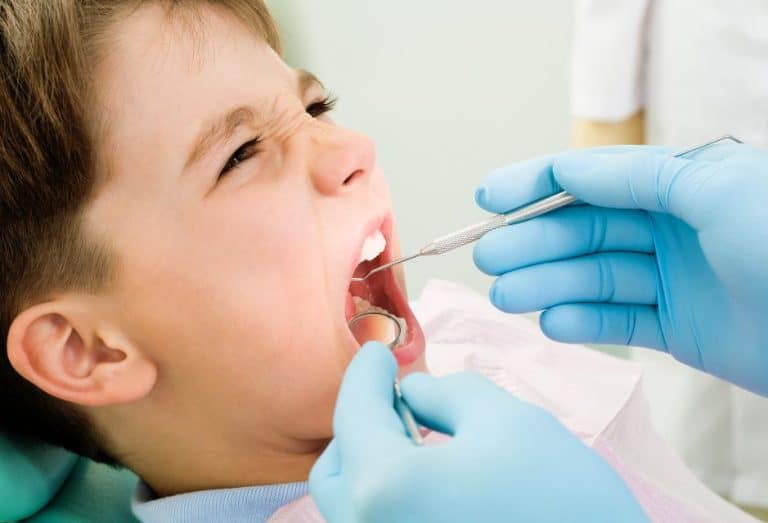
Ease of Application
A great advantage to pediatric dentists and their patients is how quickly fluoride varnish can be applied to teeth.
It takes just seconds to use, and because it’s so quick, there’s no need to spend extra time doing it.
This means more time during an office visit can be used to discuss treatments, answer patient concerns, provide education, and complete other essential tasks.
Long-term Effectiveness
A second significant benefit of fluoride varnish is that the dentist can treat multiple tooth surfaces simultaneously.
Fluoride varnish can be applied directly to the surface of a tooth, then left alone for some time before being reapplied. The dentist can repeat this process until the entire tooth receives adequate treatment.
Lower Risks
There are two advantages to using fluoride varnishes instead of fluoride foams. First, they’re easier to use because they don’t require an applicator.
Second, they contain less material, so they’re less likely to be ingested by children. With the reduced risk of swallowing fluoride, dental professionals can safely use fluoride varnishes to treat their patients’ teeth.
Child-friendly
Fluoride varnish works so well because many different flavors are available.
In addition, the American Academy of Pediatricians recommends starting fluoride varnish treatments when children’s teeth erupt.
Gag Reflex-friendly
Besides the advantages of fluoride applications to young kids, people with strong gagging reflexes may also benefit from using fluoride varnish instead of fluoride foams.
Before applying fluoride foams, dental hygienists would need to place a small piece of gauze under their tongue along with a cumbersome tray. Nowadays, though, with fluoride varnish, there’s no need for additional equipment.
Bioavailability
Besides the possible risk of a gag reflex and dental fluorosis, dental hygiene professionals should also consider other adverse health consequences that may arise from fluoride exposure.
The easiest way to determine whether or not a particular product contains fluoride is to measure its bioavailability.
For example, even though the concentrations of fluoride ions are higher in varnish than in foam, fewer of them make it into the bloodstream. Therefore, even though varnish contains a high fluoride concentration, it doesn’t threaten your health.
Cost-effectiveness

In addition to being cost-effective, fluoride varnishes can be applied quickly.
For example, a study by researchers at the University of Washington showed that children who received fluoride varnishes were less likely to experience tooth decay than those with fluoride foams applied.
Furthermore, the varnishes did not cause any discomfort to the child.
Fluoride Risks
One of the risks of using fluoride toothpaste is the potential for excessive accumulation in the body. Excessive fluoride accumulation may lead to dental fluorosis, characterized by white striated lines or pits in the surface of the teeth.
Excess Amounts
Fluoride is considered safe and effective when used according to directions.
However, it may cause harm if taken in excess amounts. Therefore, adults must supervise their children while brushing with fluoride toothpaste. In addition, keep fluoride toothpaste out of reach of young people, especially young kids.
Fluoroses
Excess fluoride can also lead to defects in the enamel of the teeth, ranging from barely visible white spots to cosmetically objectionable darkening.
These defects are called fluoroses and occur when the teeth develop – usually in children under six. When fluoroses arise, they’ve often associated with naturally occurring fluorides in well-drinking waters.
However, if you drink well-treated tap or bottled water, you probably won’t experience any problems. But if you live near an area where groundwater contains high fluoride levels, consider having your child’s teeth checked regularly for signs of fluoroses.
If you need more clarification about the mineral content of your drinking supply, test a sample to get an idea. While fluorosis teeth can’t be whitened, they can be treated with strong abrasion or bleach.
If you have questions or concerns about the fluoride levels, talk to your dental practitioner, pediatrician or doctor.
Prescription Fluoride
Prescription fluoride toothpaste or gel will be recommended if patients are at an increased risk for tooth decay because of their genetics, diet or poor oral hygiene habits.
For example, Clinpro 5000 ppm and Prevident 5000+ ppm are self-topical neutral fluoride toothpaste containing 1:1% sodium fluoride. Gels are also available to use with fluoride trays.
Fluoride trays are inserted at night to allow maximum contact time for fluoride with weakened enamel tooth structure. Both products also prevent white spots that commonly occur with braces.
As a dentist, I strongly recommend these products if you are in braces to prevent irreversible white spots after braces removal.
Water Fluoridation
According to a 2017 Australian study, community water fluoridation levels of 0.6–1.1 mg/L are not associated with cancer, Down syndrome, cognitive dysfunction, lowered intelligence or hip fracture.
Water fluoridation was once heralded as one of the best public health achievements of the twentieth century.
However, since this practice is not feasible or cost-effective in many regions, especially rural areas, researchers and policymakers have explored other methods of introducing fluoride to the general population, such as adding fluoride to milk and table salt.
Significant concerns about excessive fluoride intake and related toxicity have been raised lately, leading several countries to ban fluoridation.
Studies show that water fluoridation effectively reduces tooth decay by 20% to 40% in children and adults.
Frequently Asked Questions (FAQ)
My Experience & Expertise
Fluoride varnish serves an essential purpose for high cavity-risk patients.
According to countless studies and research, fluoride is safe if it’s used as directed and not in excessive amounts.
Fluoride is most impactful for children while they develop brushing habits. In addition, dental sealants are recommended and applied on 1st and 2nd molars.
These molars erupt at age 6 and 12. Talk to your dentist if you have any questions or concerns.
Need a second opinion? We can help! Learn more. Knowledge is power when cultivating healthy dental habits. The more informed you are, the better positioned you’ll be to prevent avoidable and potentially costly dental procedures for you and your family. Watch for future blog posts, where we’ll continue sharing important information, product reviews and practical advice!
Sources
- Aoun A. The Fluoride Debate: The Pros and Cons of Fluoridation. Prev Nutr Food Sci. 2018.
- Guth S. Toxicity of fluoride: critical evaluation of evidence for human developmental neurotoxicity in epidemiological studies, animal experiments and in vitro analyses. Arch Toxicol. 2020.
- Weintraub JA. Fluoride varnish efficacy in preventing early childhood caries. J Dent Res. 2006.

About the Author
Dr. Matthew Hannan, also known as “Dr. Advocate,” is a board-certified dentist on a mission to provide accurate dental patient education. He attended Baylor University before completing dental school at UT Health San Antonio School of Dentistry. He now lives in Arizona with his beautiful wife and 4 kids. Dr. Hannan believes everyone should access easy-to-read dental resources with relevant, up-to-date dental research and insight to improve their oral health.

Connect with Dr. Hannan!
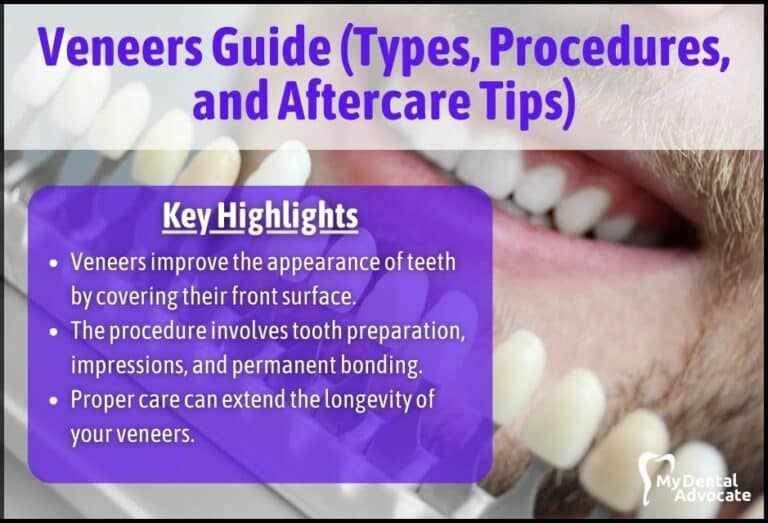
Veneers Guide (Types, Procedures, and Aftercare Tips)
Veneers Guide (Types, Procedures, and Aftercare Tips) Veneers are a popular cosmetic dental option for those looking to enhance the…
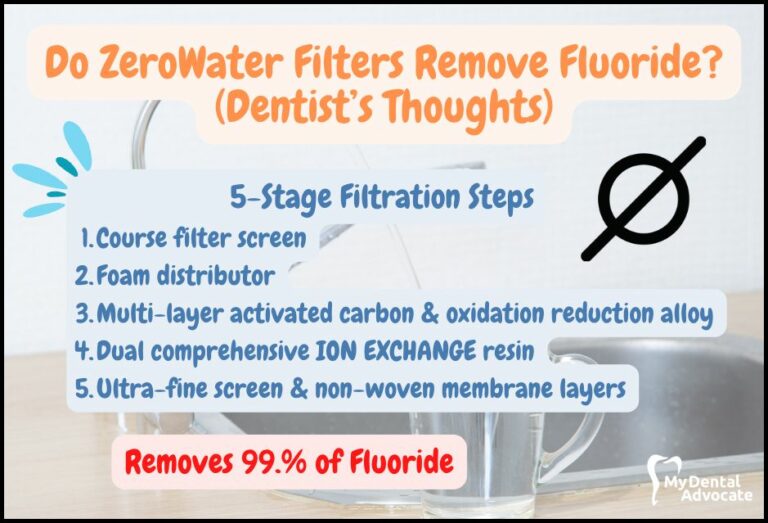
Do ZeroWater Filters Remove Fluoride?
Water filtration systems have become a popular choice for many households looking to improve the quality of their drinking water. ZeroWater and Brita are two of the most well-known brands in the market, with millions of users worldwide. While Brita uses a basic filtration system, ZeroWater…
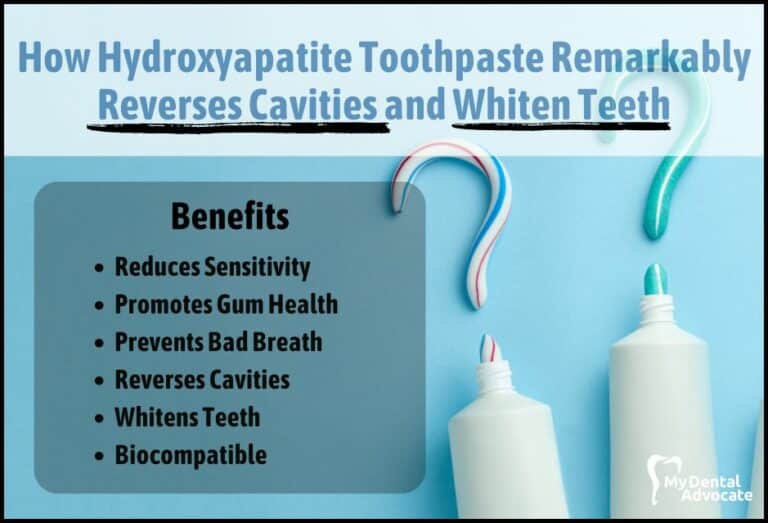
How Hydroxyapatite Toothpaste Remarkably Reverses Cavities & Whiten Teeth
Are you tired of using harsh, ineffective toothpaste that leaves your teeth sensitive and stained? Look no further than hydroxyapatite toothpaste, the natural and innovative dental product taking the oral health world by storm…
Gain Clarity with Our FREE Second Opinion Guide
Receive clear, expert second opinions online within 48 hours. Start today!
Product Reviews
Our 250+ dental product reviews (and counting), curated by an experienced dentist, are the most comprehensive online.
Toothbrush Genie
State-of-the-art chatbot designed to help you discover your perfect toothbrush in just a few simple steps!
Cavity Risk Assessment
Cutting-edge digital tool designed to evaluate your individual cavity risk based on your responses to a series of questions.
Gum Disease Assessment
Discover your gum disease risk with our quick and engaging 6-question assessment!
